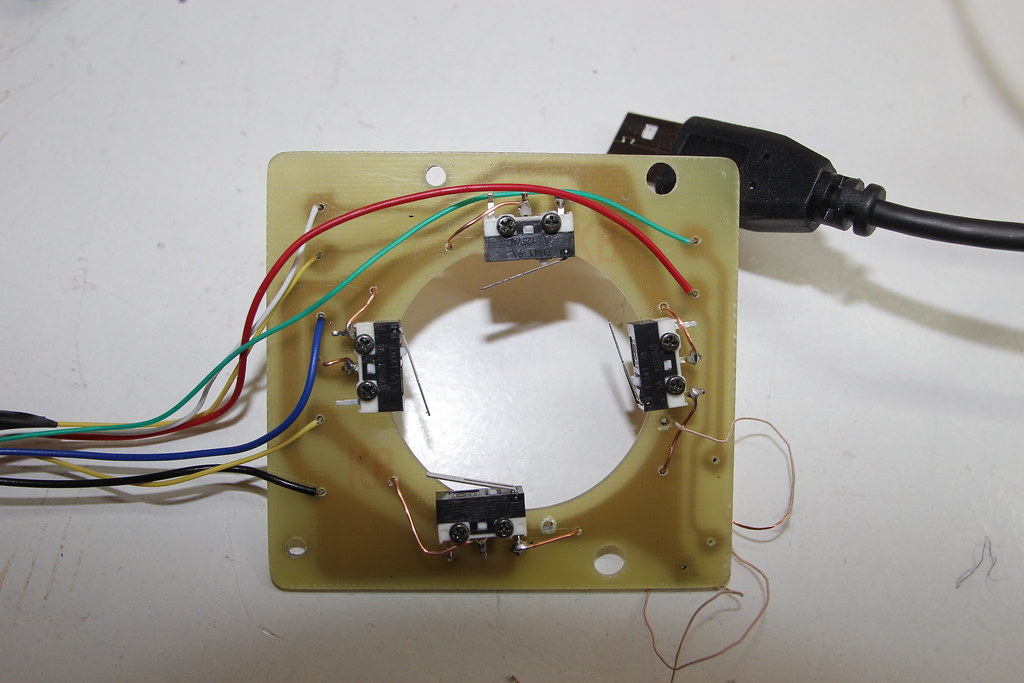I need a nice and compact rotary encoder that will be a a lot smaller than this that I've already built.......

This based on a BMW iDrive controller,the toothed wheel I had laser cut especially for this.This has to do nothing more complicated than provide a simple on/off pulse when you turn the the controller in one direction,and the same but on another wire when you turn it in the other direction.The original mechanism has 24 detents that still work and match up with the number of teeth on the wheel that operates the microswitch.
It was designed to have surface mount microswitches on the PCB shown above,these didn't work so I have it like this instead..........

This gives me another four functions that are fed to a UHID keyboard emulator to control a media player,with the rotary motion being used for volume up and down.
I've already tried different sorts of optical encoders and it's a bit beyond what I'm capable of working with,so I really want to keep this as simple as possible and use good old fashioned mechanical switches but a lot more compact than what I've got at the moment.Is there at the very least an all-in-one switch that does this,the volume control function is essential and the whole point of this project,the other up/down/left/right functions I can do some other way if needed?I know there are some nice big vintage style rotary switches,but mostly they're too big,can't detect which way it's being turned and are too stiff to turn,this has to need very little effort to turn it.The exact number of detents isn't critical,but should ideally be between 20 and 30.
I have spent a long time on Google looking for such a switch,but when you don't know the name of it,it's difficult to know what to look for.

This based on a BMW iDrive controller,the toothed wheel I had laser cut especially for this.This has to do nothing more complicated than provide a simple on/off pulse when you turn the the controller in one direction,and the same but on another wire when you turn it in the other direction.The original mechanism has 24 detents that still work and match up with the number of teeth on the wheel that operates the microswitch.
It was designed to have surface mount microswitches on the PCB shown above,these didn't work so I have it like this instead..........

This gives me another four functions that are fed to a UHID keyboard emulator to control a media player,with the rotary motion being used for volume up and down.
I've already tried different sorts of optical encoders and it's a bit beyond what I'm capable of working with,so I really want to keep this as simple as possible and use good old fashioned mechanical switches but a lot more compact than what I've got at the moment.Is there at the very least an all-in-one switch that does this,the volume control function is essential and the whole point of this project,the other up/down/left/right functions I can do some other way if needed?I know there are some nice big vintage style rotary switches,but mostly they're too big,can't detect which way it's being turned and are too stiff to turn,this has to need very little effort to turn it.The exact number of detents isn't critical,but should ideally be between 20 and 30.
I have spent a long time on Google looking for such a switch,but when you don't know the name of it,it's difficult to know what to look for.
Last edited:


 .What about something like this......
.What about something like this......